Trees are a great addition to your garden. They provide new elements to draw the eye, a source of shade, and a convenient barrier to keep out some noise. However, it’s crucial you care for your trees properly. Fruit tree care in summer is particularly essential if you want to reap their yield. Hot, dry summers can have an impact on your trees, especially when they’re young and growing.
At times like these, human intervention is key to helping your trees grow up healthy. Here’s a list of care ideas you can use to preserve your trees and keep them out of harm’s way this summer:
1. Apply a fresh layer of mulch
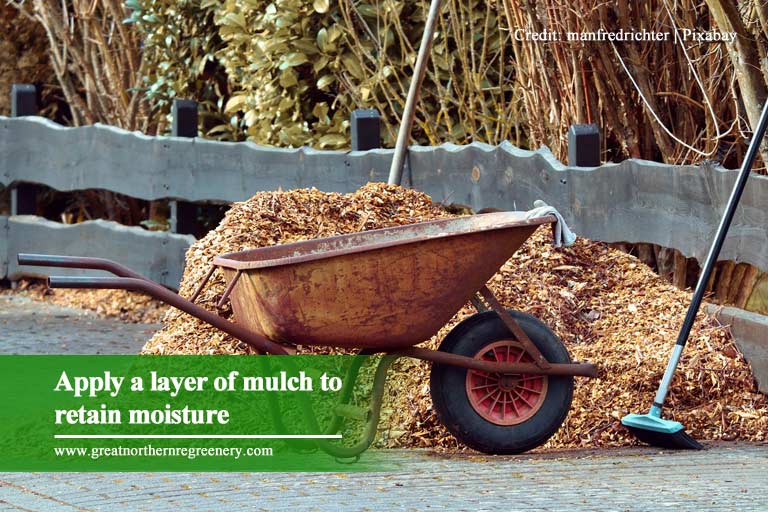
Applying mulch provides some much-needed help for trees, especially around the root area. It’s a great way to protect the roots from the heat and retain moisture. Proper application of mulch is a good way to help young trees take in more water and set down strong root systems.
When applying mulch, less is more. Apply just enough mulch to avoid creating a friendly environment for pests and germs. One layer around 5 to 10 centimetres thick should do. Remember to leave some space between the mulch and the base of the tree as well. Arrange the mulch into a doughnut shape around the tree to discourage pests and disease.
2.Watch out for signs of heat stress
Proper cooling and shading are integral to proper summer tree care. Give your young trees plenty of shade to protect them from excess heat and avoid heat stress. Keep a sharp eye out for heat stress on the particularly hot days.
Common signs include drooping, wilting leaves, and yellowing of the leaves. In case of heat stress, give your tree sufficient water to help it recover. Keep those signs in mind on other hot days to make it easier to detect heat stress in the future. Remembering the telltale clues allows you to be more proactive in tree care.
3.Make sure the roots and trunk are safe
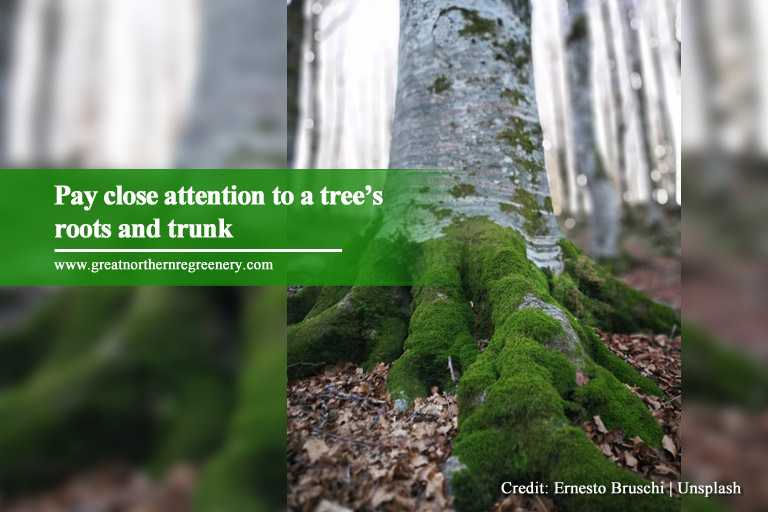
The roots are one of the most vital parts of a tree, and looking after them is key to looking after its health. With more free time on our hands, your trees may be exposed to more foot traffic when you leave the house to get some air. Applying some mulch can provide a minor barrier against people coming near the tree.
Invest in a more substantial barrier if the tree lies near a well-trodden path. If the tree is young, it’s even more important to have a barrier to keep animals from hurting it as it grows. You can also plant some nearby shrubs to be extra certain of keeping people a safe distance from the tree. You can also use those plants to help deter possible intruders and keep your home safe.
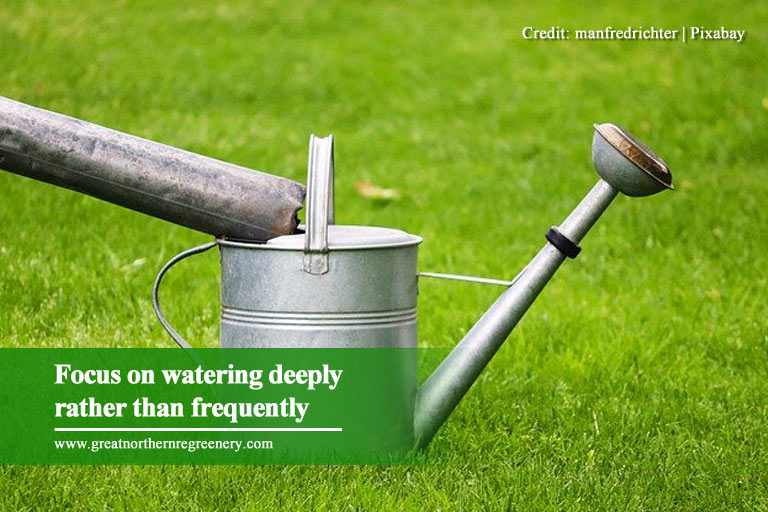
4.Water the tree consistently
Knowing how to water your trees properly should be your priority during the summer. When it comes to watering your trees, focus on the root zone to maximize the amount of water they get each time.
Trees respond better to deeper, less frequent watering than more regular watering. Focus on deep watering by watering more thoroughly each time. This allows water to seep deeper into the ground, which encourages deeper root growth. For even better results, consider doing your watering early in the morning. Starting early minimizes evaporation and helps the tree deal with the heat as the day goes on.
5.Fertilize properly
Fertilizing is key to helping your tree stay strong and healthy. Fertilizer adds nutrients to the soil; the healthier the soil, the healthier the tree. More nourishment in the soil is key to a tree developing healthy leaf and shoot systems. More nutrients are also vital to strengthening the tree against infection and pests.
There are plenty of factors to consider when choosing an optimal type of fertilizer, particularly for trees planted for their utility (like fruit trees). Take into account quality to make sure your crop turns out healthy and tasty. Trees in high-stress areas like urban environments also tend to have higher fertilization needs. Consult a professional arborist to find fertilization practices that work for your summer fruit tree care regimen.
6.Take good care of the soil
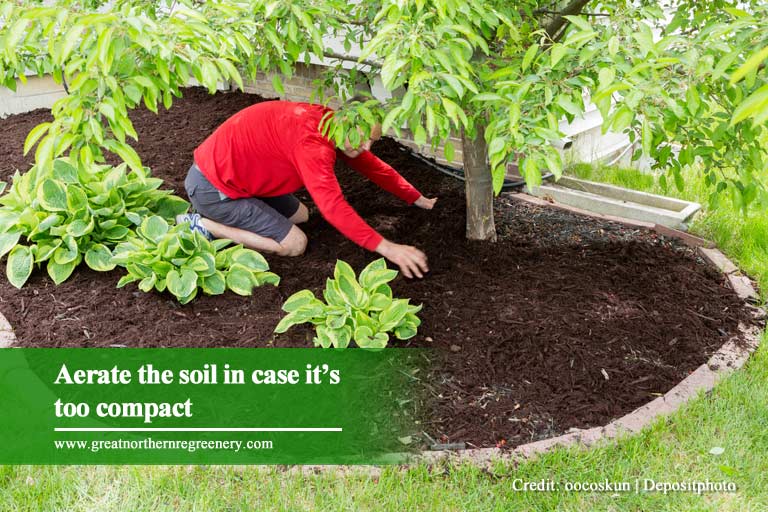
One final way to look after your tree is by checking the surrounding soil in which it sits. When the soil is extremely compact, it prevents the tree from getting the water and nutrients it needs.
Fix the problem by aerating the soil to increase the flow of air and water to the roots. First, get the surrounding soil moist to loosen it up. Next, use a soil auger or drill to make a series of holes in the ground around 5 centimetres apart. Start roughly 1 metre away and go back every half metre until you hit the canopy. Each hole should be about 5 centimetres in diameter and up to 50 centimetres deep. Fill each hole loosely with topsoil, then add mulch at the end.
7.Inspect for pests regularly
A tree may look healthy and strong, but there’s no telling what’s lying under the surface until you take a look. The warm summer weather is optimal weather for pest growth, so constant vigilance is necessary to stay one step ahead of any infestation. Conduct inspections roughly every week before to give yourself an idea of what problems the tree is facing.
Keep a sharp eye out for cleanly bored holes, dripping sap, and dead branches. These indicators are often signs of larval infestations that could affect the tree’s water uptake. Being proactive is a great way to give yourself some early warning of an infestation, so make inspections part of your regular tree care regimen. While you’re at it, you can also keep an eye out on other trees in the neighbourhood. Detecting local pests can help prevent localised infestations just in time. Stay vigilant to protect your local trees and prevent any pests from spreading.
8.Refrain from pruning
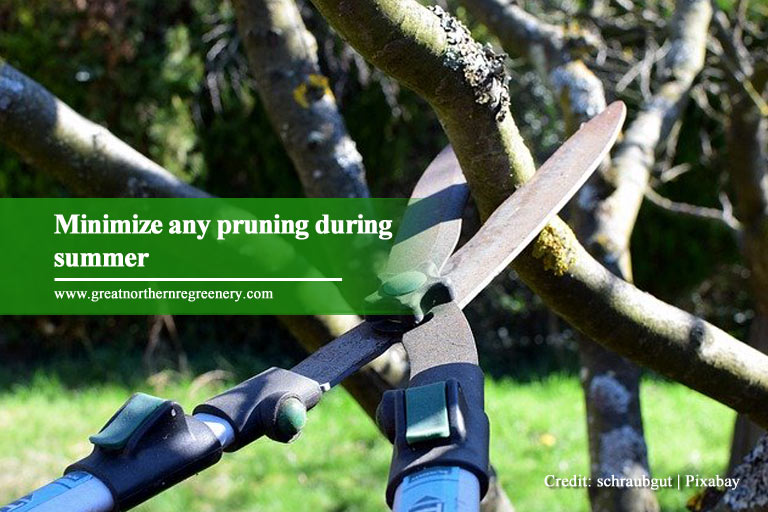
Pruning is often necessary for maintaining the tree’s health and appearance. However, in summer it’s generally better to avoid pruning unless removing diseased or damaged branches. In those cases, swift removal helps minimize any damage and prevents it from spreading to other parts of the tree.
Proper pruning can improve a tree’s health by promoting air circulation and reducing water uptake. However, to avoid putting undue strain on the tree and compromising stability, pruning is typically a job best left to the pros. Consult an arborist for pruning that’s effective and done at the right times and for the right reasons.
9.Consider cabling for safety
Summer is usually known for being hot, but summer storms can represent an unexpected problem for your trees. Severe storms can tear loose or dead branches free, making them hazardous to the area around a tree. For extra protection to your yard, consult an arborist to get an idea of the right course of action.
A professional may suggest removing the dead branches or installing cables to secure parts of the tree that may be at risk. In addition to making the yard a little safer, tree cabling can also help cut down on shedding of twigs and leaves over the summer. Certain trees like maples, willows, birches, and cedars are often prone to leaf drop. Cabling is an effective method of minimizing messes in the yard. On another note, if your family prefers to go all-natural with your Christmas trees, cabling is an effective method of Christmas tree care in summer to keep your tree safe until the holidays.
When you’re looking for professional arborists to offer a helping hand with your tree care, contact Great Northern Regreenery. Our teams are fully trained and qualified to offer quality service and maintain safety at all times. Call us now at (905) 775-7444 for a free inspection and assessment of your trees.





